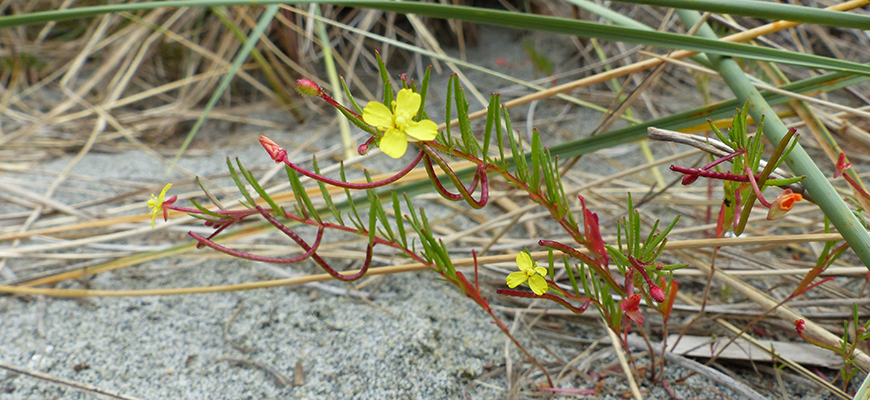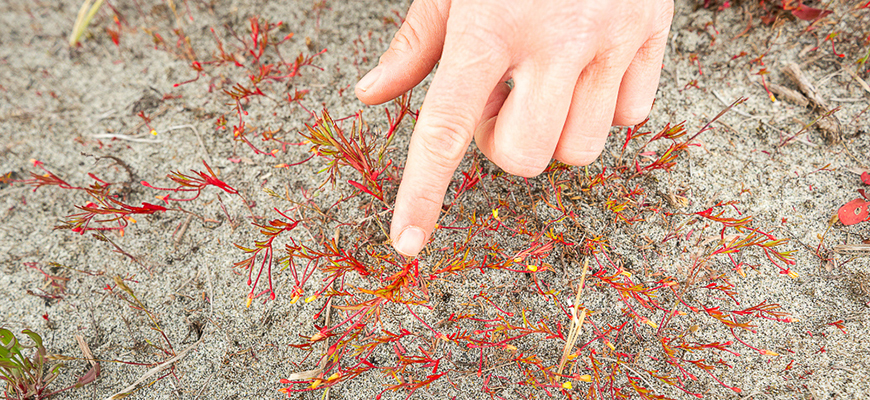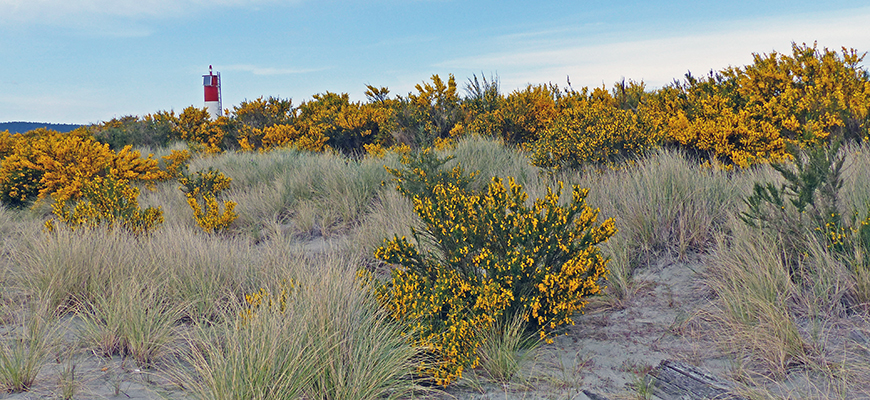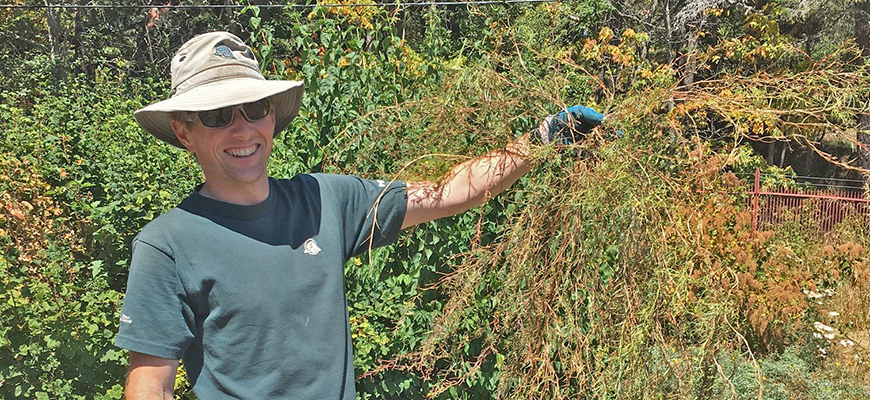
Illustration © Sheri Amsel
Contorted-pod evening-primrose: Species at Risk recovery
Gulf Islands National Park Reserve
You will likely never see the contorted-pod evening-primrose (Camissonia contorta) in person. It’s small and rare. And it lives in a fragile ecosystem that can’t handle being trampled by people.
Even if you never see it, you can still be its champion. Learn more about the contorted-pod evening-primrose and Parks Canada’s work to save it.
Three reasons to love the contorted-pod evening-primrose:
1. It's nearly homeless

The endangered contorted-pod evening-primrose lives in only a handful of places in Canada. One of these places is on Sidney Island in Gulf Islands National Park Reserve. Development, invasive plants and recreation on dunes has driven this rare plant out of many of the places where it once lived.
2. It's a survivor

This plant faces hardships where it grows in the harsh coastal sand ecosystem. To survive the winter storms and summer droughts, it lives a short life. It sprouts for a few months in the spring as a wiry, sprawling plant before casting its seeds on the sand, and then dies.
3. It faces mighty opponents

Scotch broom and European beach grass have invaded many of the sandy places where contorted-pod evening-primrose once lived. The roots of these introduced plants stop the sand from shifting. This eliminates the open spaces where the seeds of the tiny contorted-pod evening-primrose used to sprout.
Three ways to care for the contorted-pod evening-primrose:
1. Make space

Sidney Spit was so choked with invasive plants (introduced from Europe) that the native plants were squeezed out. It was like an overcrowded house where you can’t find anything. Time to clean the house!
Parks Canada’s action:
We organized a massive restoration effort over several years to clear invasive plants from the tip of Sidney Spit, an area called ‘the teardrop.’ Staff and volunteers worked hard for thousands of hours. They dug up Scotch broom and European beach grass and piled them to be burned.
Once we removed the invasive plants, the native plants began to return to the coastal sand ecosystem.
Action you can take:
Contact us if you would like to experience the personal satisfaction of volunteering to save a threatened ecosystem.
2. Plant seeds

Clearing away invasive plants was only part of the restoration work needed to bring the contorted-pod evening-primrose back to Sidney Spit. It needed an extra boost.
Parks Canada’s action:
Park scientists gathered seeds and grew them in a conservation nursery at nearby Fort Rodd Hill National Historic Site.
To recreate the natural conditions where the plant grew, staff filled a nursery bed with mostly sand. This did the trick. A giant contorted-pod evening-primrose blossomed at the nursery and produced over a pound of seeds!
We planted millions of these nursery-grown seeds in Gulf Islands National Park Reserve. Dense meadows of contorted-pod evening-primrose now cover parts of Sidney Spit.
Action you can take:
Grow native plants on your patio, in your yard and in your garden. You’ll make the bees, butterflies and birds very happy.
3. Respect the line

Unfortunately, people and dogs pose a threat to coastal sand ecosystem plants like the contorted-pod evening-primrose. We can unknowingly trample the tiny plants.
Parks Canada’s action:
We built a post-and-rope fence around the restoration site. We also posted signs telling visitors about the project and asking them to respect the fences and keep out of the closed area.Action you can take:
When the ocean rises along the beach, the water leaves a line of driftwood and seaweed. The highest of these lines marks the high tide line.
Treat that line as the boundary between the sandy beach you can enjoy (with your dog on-leash) and the upper spit area you need to stay away from to protect rare plants and animals.
Learn more about the contorted-pod evening-primrose and Species at Risk recovery
- Date modified :